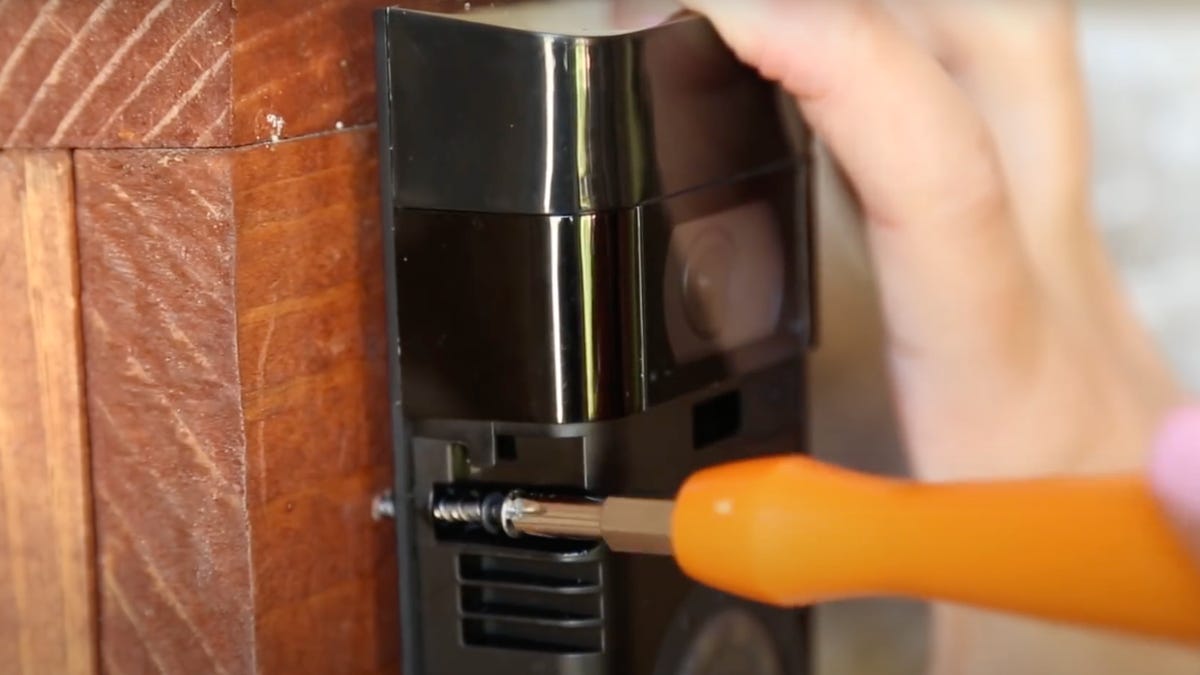 Why You Can Trust CNET
Why You Can Trust CNET How to install a doorbell: From video doorbells to traditional ones
A step-by-step guide for installing wired and wireless doorbells.

Doorbells do more than ring these days: They can be security devices, two-way microphones and messaging systems for giving automated directions to delivery people using Alexa. But whether you're looking for the newest, top-of-the-line video doorbell, or just a simple button connected to a chime, installing can be a handful.
If you need to install a new doorbell, here's what you need to know. Sometimes a DIY project like this is straightforward, but if you find yourself in over your head with wiring, it's never a bad idea to play it safe and call an electrician. However, if you've got the appropriate tools and knowledge, here's how to install a new doorbell.
Read more: The best video doorbells to buy in 2021
Traditional doorbells
Let's start with your traditional, hardwired doorbell installation. For those with wires already installed, gather the following materials:
- Doorbell
- Screwdriver
- Current detector
Once you have these items in place, follow these steps to install your new doorbell.
Turn off the power: Make sure your power is off for the wires you'll be handling. Find the breaker and shut the power off to the wires. You can use your current detector to verify that your wiring is without power.
When you're dealing with wires, it's important to make sure the power is off.
Remove the existing doorbell: Once the power is off, unscrew the screws that keep the housing of the doorbell in place.
Unwire the old doorbell: After the housing is removed, unbind the 18-gauge wires from their terminals and place the new doorbell where the older unit was.
Rewire the new device: Bind each of the wires to the separate terminals on the new doorbell, then screw them down. Use more screws to fasten your new doorbell into place with the supplied housing.
If you have brick or masonry as the substrate for your doorbell, consider using a masonry bit to prime a hole, then a drill bit to expand the hole in order to place a plastic masonry fastener. This is important for your doorbell as it will offer a more secure fitting. Since cosmetic damage is, unfortunately, easy to cause in this case, this might be a task best left to professionals.
If you have no pre-existing wiring in your residence, it's better to let the professionals handle the installation. An electrician can determine the ideal wiring installation as well as possible a transformer replacement that may be required for your doorbell to work. Since your new doorbell will require an undervolting transformer of 24 volts, extensive wiring, electrical load calculations, as well as more cutting and drilling, it's best to skip accidentally shocking yourself and get a licensed electrician involved.
Ringing in new tech
Is a traditional doorbell too boring for you? Consider investing in a smart doorbell. The installation is identical to that of a traditional doorbell, except you'll replace the older bell with your smart doorbell. Most smart doorbells, like Arlo's Video Doorbell and the recently released Ring Video Doorbell Wired, require installation of an app, along with some sort of registration process.
Plenty of video doorbells are on the market, from Nest, Arlo, Ring and other developers.
Using its connection to your Wi-Fi, Ring enables you to have your phone behave as a chime, although you may still tether the Ring Doorbell to one of their proprietary outlet chimes. This option is better if you're hard of hearing or like the immediacy of knowing who's knocking on their door.
With smart doorbells, too, it's not a bad idea to get a licensed electrician involved when dealing with high voltage wiring or particularly difficult drilling. A reputable electrician can install wires as well as avoid unnecessary holes and accidental blemishes to your brick, stucco or wood.
Simply wireless
If you live in a rental where cosmetic alterations are limited, you're in luck. Wireless doorbells like Secrui and Ring's Peephole Cam are available and require no permanent alterations to your residence. Most wireless doorbell systems are plug-and-play, meaning you simply need to place the doorbell where you would like it to go and then place the receiver chime into any outlet inside your home.
Ring's Peephole Cam is a great doorbell alternative for apartment dwellers.
To install your wireless doorbell, check to see if the device has a magnetic base with an adhesive. Usually, wireless doorbells will have a strong adhesive on the back or a double-sided adhesive strip for mounting. The doorbell may also have a magnet, which will allow you to place it on metal gates or door frames.
First, use alcohol to clean the area where you'd like to mount the doorbell. Dust and moisture will prevent the adhesive from working effectively, so make sure the area is fully cleaned and dry. Then, apply the adhesive and mount your doorbell. Be mindful of the range limitations between devices and their chimes -- if they don't use Wi-Fi. Also keep in mind that these devices will have varying battery life, which may mean recharging the device every few months, or simply replacing the batteries periodically.
That's it! Now you can enjoy the benefits of your new doorbell.
DIY home projects can be intimidating to take on, so don't hesitate to involve a professional if you feel the task feels like it's getting out of hand. Your safety should be your number one priority, especially when working with electrical wiring. Interested in gaining more insight on the variety of doorbell options at your fingertips? See how Arlo's Video Doorbell stacks up against the Nest Hello or Ring Video Doorbell Wired.